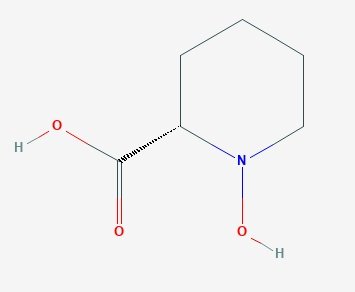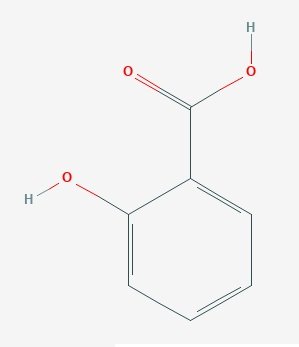N-Hydroxypipecolic Acid: A Novel Metabolite of Lysine Controlling Systemic Acquired Resistance in Plants
What is Systemic Acquired Resistance?
Systemic acquired resistance is defined in Wikipedia as follows:
The systemic acquired resistance (SAR) is a "whole-plant" resistance response that occurs following an earlier localized exposure to a pathogen. SAR is analogous to the innate immune system found in animals, and there is evidence that SAR in plants and innate immunity in animals may be evolutionarily conserved. SAR is important for plants to resist disease, as well as to recover from disease once formed. SAR can be induced by a wide range of pathogens, especially (but not only) those that cause tissue necrosis, and the resistance observed following induction of SAR is effective against a wide range of pathogens, which is why SAR resistance is sometimes called "broad spectrum". SAR has been observed in a wide range of flowering plants, including dicotyledon and monocotyledon species.
Plants use pattern-recognition receptors to recognize conserved microbial signatures. This recognition triggers an immune response. Plants also carry immune receptors that recognize highly variable pathogen effectors, these include the NBS-LRR class of proteins. SAR is associated with the induction of a wide range of genes (so called PR or "pathogenesis-related" genes), and the activation of SAR requires the accumulation of endogenous salicylic acid (SA). The pathogen-induced SA signal activates a molecular signal transduction pathway that is identified by a gene called NIM1, NPR1 or SAI1 (three names for the same gene) in the model genetic system Arabidopsis thaliana.
The key points from this summary are that Salicylic acid appears to be the primary inducer of SAR, and that NPR1 (Nonexpressor of pathogenesis-related genes 1) is the major transcription factor that interacts with salicylic acid to activate pathogen defense genes. For relatively recent articles describing these key players and interacting components of the pathogen defense pathways, please see Jin et al. (2018), Klessig et al. (2018), and Sun et al. (2018) cited in the References section below.
There are two main pathways of synthesis of salicylic acid in plants, one via isochorismate (Wildermuth et al. (2001)) and one via benzoic acid (Yalpani et al. (1993), Lee et al. (1995)). The isochorismate pathway requires the catalytic activity of isochorismate synthase 1 (ICS1).
There has been an evolutionary arms race between pathogens and plants, and many pathogens have learned how to disrupt the plant salicylic acid-mediated defense pathways (Qi et al. (2018)):
To establish successful infections, plant bacterial, oomycete, fungal, and viral pathogens have evolved at least three major strategies to disrupt SA-mediated defense. The first strategy is to reduce SA accumulation directly by converting SA into its inactive derivatives. The second strategy is to interrupt SA biosynthesis by targeting the ICS1 pathway. In the third major strategy, plant pathogens deploy different mechanisms to interfere with SA downstream signaling. From: Qi et al. (2018)
Enter N-Hydroxypipecolic Acid, A Metabolite of Lysine
Recently a new metabolite with structural similarity to salicylic acid, N-hydroxypipecolic acid, has been identified as a key regulator of pathogen defense in plants (Hartmann and Zeier (2018)).

Structure of N-Hydroxypipecolic acid ((2S)-1-Hydroxypiperidine-2-carboxylic acid)
N-hydroxypipecolic acid induces the expression of a set of major plant immune genes to enhance defense readiness, amplifies resistance responses, acts synergistically with the defense hormone salicylic acid, promotes the hypersensitive cell death response and primes plants for effective immune mobilization in cases of future pathogen challenge. From: Hartmann and Zeier (2018).
N-hydroxypipecolic acid is derived from the amino acid lysine. An aminotransferase catalyzes the conversion of lysine to cyclic dehydropipecolic acid that is subsequently reduced to pipecolic acid. Pipecolic acid is then N-hydroxylated by a flavin-dependent monooxygenase (Hartmann and Zeier (2018), Hartmann et al. (2018), Chen et al. (2018)). The latter discoveries have been highlighted in accompanying editorials by Kachroo and Kachroo (2018) and Shan and He (2018), and an independent publication by Ádám et al. (2018).
These discoveries begin to explain earlier work implicating lysine and pipecolic acid in plant immunity (Hartmann et al. (2017), Bernsdorff et al. (2016), Yang and Ludewig (2014), Vogel-Adghough et al. (2013), Návarová et al. (2012)), why an aminotransferase is involved in pathogen defense (Song et al. (2004)), and why the Arabidopsis flavin-dependent monooxygenase FMO1 is an essential component of biologically induced systemic acquired resistance (Mishina and Zeier (2006)).
I personally wonder whether this salicylic acid-independent signaling pathway may have evolved in plants to combat pathogens that have evolved strategies to disrupt salicylic acid-mediated defense (Qi et al. (2018))? Lysine is usually a relatively minor component of the free amino acid pool of higher plants, but levels of free lysine can increase markedly in stressful environments when protein synthesis is inhibited and protein turnover is accelerated (Vogel-Adghough et al. (2013)). Elevated levels of free lysine would then promote its own catabolism to pipecolic acid and its N-hydroxy derivative. Perhaps this pathway evolved in plants as a mechanism to induce defense pathways in response to protein degradation caused by pathogens (Vogel-Adghough et al. (2013))?
References:
Kachroo, P., Kachroo, A. Plants pack a quiver full of arrows. Cell Host Microbe 23: 573-575 (2018)

This post has been voted on by the SteemSTEM curation team and voting trail in collaboration with @curie.
If you appreciate the work we are doing then consider voting both projects for witness by selecting stem.witness and curie!
For additional information please join us on the SteemSTEM discord and to get to know the rest of the community!
Interesting discussion of the plant kingdom's version of immunity. The biological end products and waste products of plants--and in turn their practical applications--are fascinating.
Thank you. The role of small molecules in regulating key processes in plants, such as defence against pathogens, is fascinating.
Are there any known examples of plant pathogens that have found a way to bypass salicylic acid-mediated defense?
Yes, these are described by Qi et al. (2018) cited in the References section. One example would be the citrus pathogen Candidatus Liberibacter asiaticus that produces an enzyme that degrades salicylic acid:
Li, J., Pang, Z., Trivedi, P., Zhou, X., Ying, X., Jia, H., Wang, N. 'Candidatus Liberibacter asiaticus' Encodes a Functional Salicylic Acid (SA) Hydroxylase That Degrades SA to Suppress Plant Defenses. Mol. Plant Microbe Interact. 30: 620-630 (2017)
Congratulations @davidrhodes124! You have completed the following achievement on the Steem blockchain and have been rewarded with new badge(s) :
Click here to view your Board
If you no longer want to receive notifications, reply to this comment with the word
STOPTo support your work, I also upvoted your post!